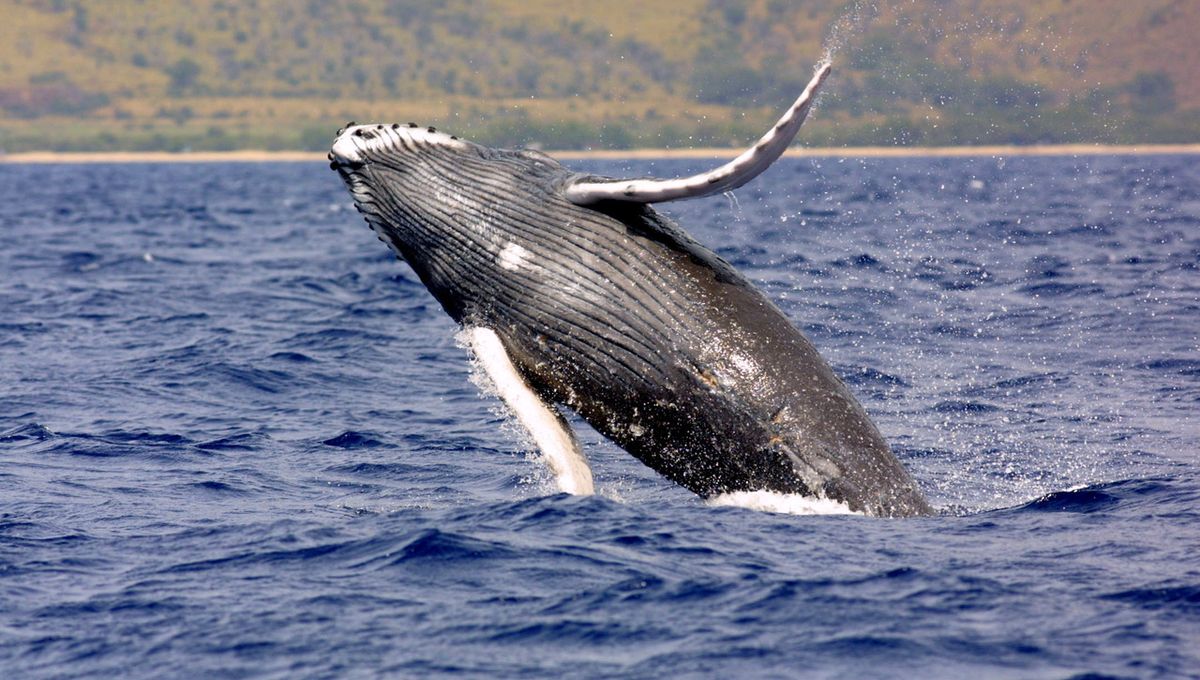
Scientists believe that humpback whales should join the esteemed rank of tool users, along with Homo sapiens, apes, crows, and a variety of other super-smart creatures. Unlike these other clever characters, humpbacks are particularly special because they create the tools themselves and ingeniously adapt them to suit their needs.
The tools in question are “bubble nets” produced by the whale’s blowhole that are used to herd and catch krill. In a new study, researchers show how humpback whales in Alaska skillfully manipulate their unique bubble nets in various ways to maximize their food intake.
“Many animals use tools to help them find food, but very few actually create or modify these tools themselves,” Professor Lars Bejder, co-lead author of the study and Director of the Marine Mammal Research Program (MMRP) at the University of Hawaiʻi at Mānoa, said in a statement.
“This little-studied foraging behavior is wholly unique to humpback whales. It’s so incredible to see these animals in their natural habitat, performing behaviors that only a few people ever get to see,” explains co-author and MMRP researcher William Gough.
To learn about this incredible behavior, the researchers headed to the ocean off Southeast Alaska and monitored the whales using non-invasive suction-cup tags on whales and drone videography. The wealth of data showed that the behavior is surprisingly complex – it appears the humpbacks can accurately gauge the size of the krill swarm and fine-tune their bubble blowing to optimize each catch.
“These whales skillfully blow bubbles in patterns that form nets with internal rings, actively controlling details like the number of rings, the size and depth of the net, and the spacing between bubbles. This method lets them capture up to seven times more prey in a single feeding dive without using extra energy. This impressive behavior places humpback whales among the rare group of animals that both make and use their own tools for hunting,” Bejder explained.
Humpback whales (Megaptera novaeangliae) are one of the largest animals on the planet, reaching lengths of up to 18.3 meters (60 feet). The species are baleen whales, the same as other giants like blue whales and fin whales.
Their population numbers were decimated by the whaling industry in the 19th and 20th centuries, although have managed to bounce back in recent decades. Still, the species faces a slew of threats, from climate change and habitat loss to vessel strikes and pollution.
The good news, the researchers say, is that they are clearly inventive and intelligent animals that are relatively well-prepared to face the challenges ahead.
“What I find exciting is that humpbacks have come up with complex tools allowing them to exploit prey aggregations that otherwise would be unavailable to them. It is this behavioral flexibility and ingenuity that I hope will serve these whales well as our oceans continue to change,” notes Andy Szabo, co-lead study author and Executive Director of the Alaska Whale Foundation.
The new study is published in the journal Royal Society Open Science.
Source Link: Humpback Whales Revealed To Be Tool Users, Catching Krill With Amazing Skill